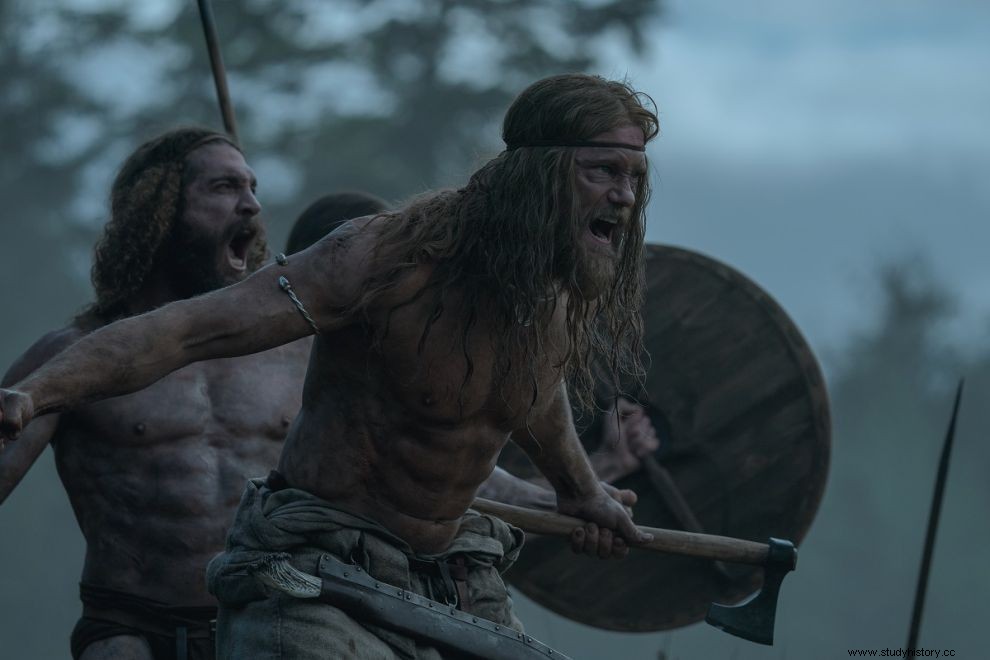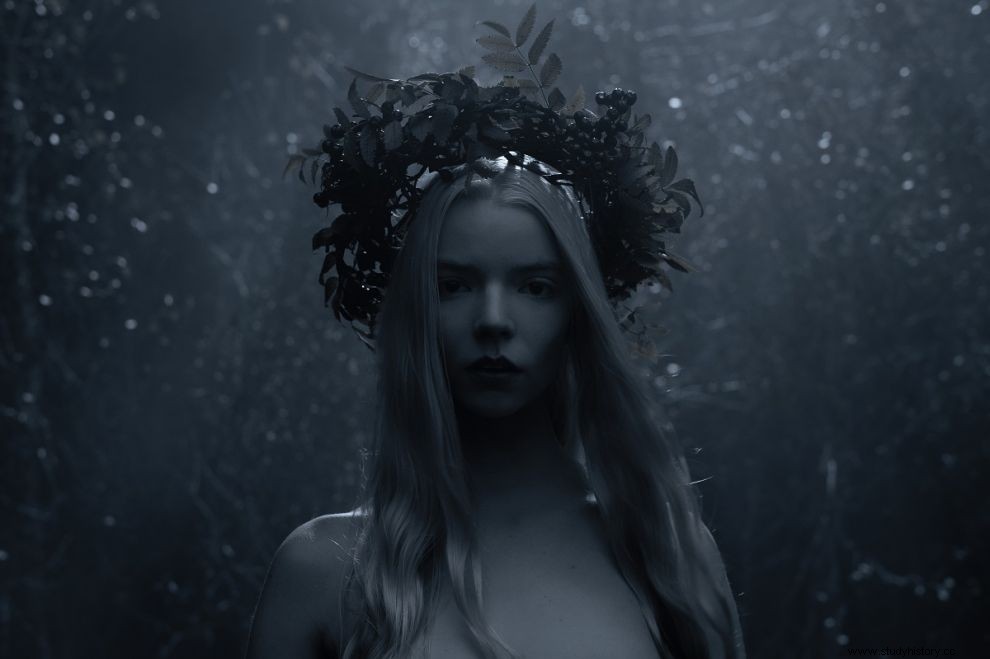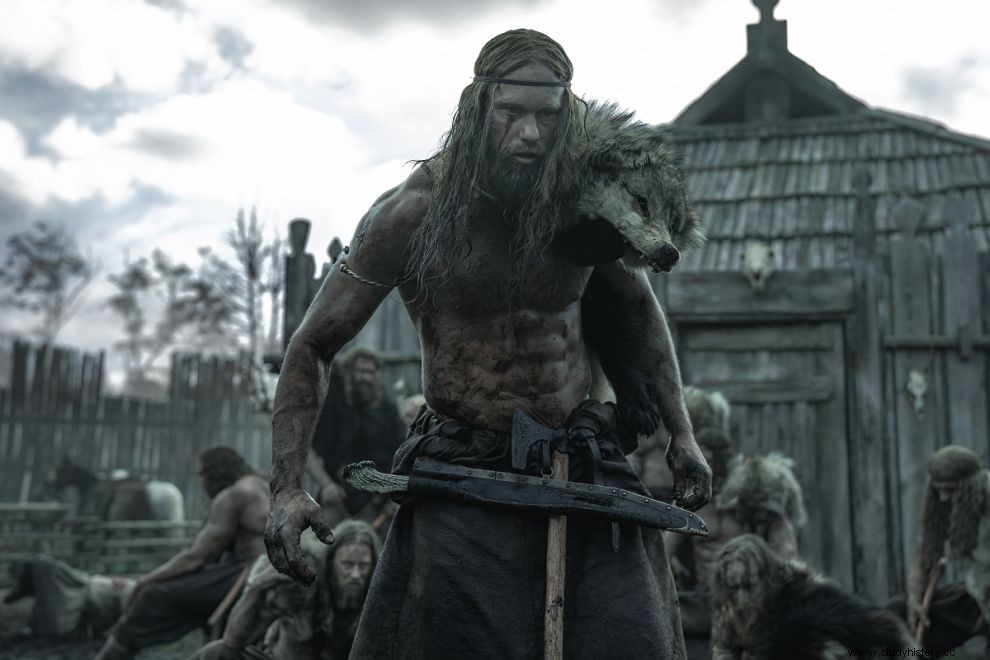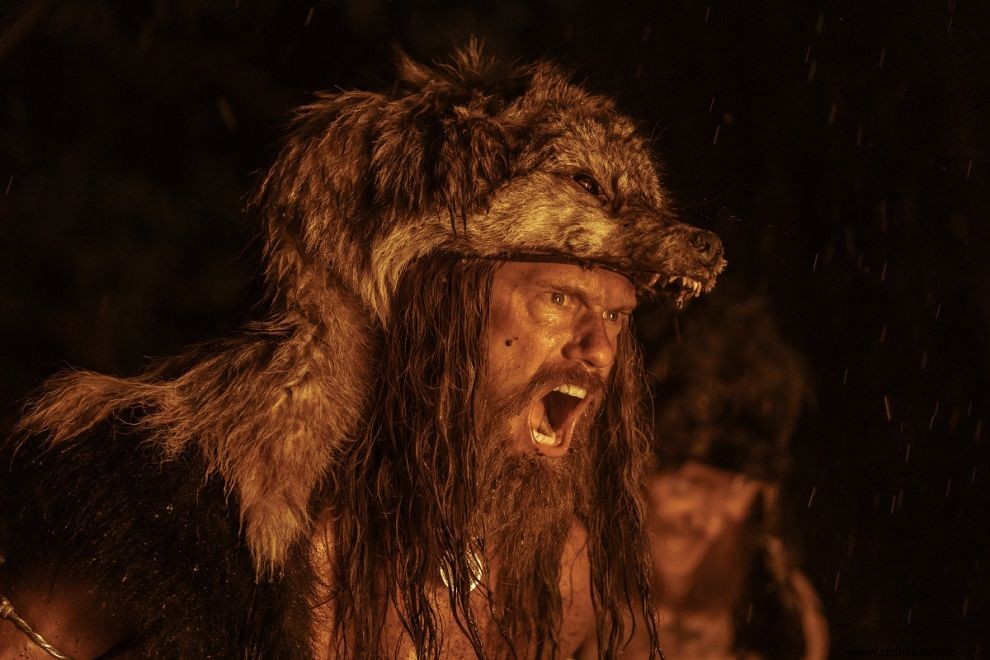In the first scene, the one that plunges us into the mystical world of "Northman" , we see a multitude of black wings flying over the gray waters, above the wooden ships that seem to be sailing towards a distant island. Below the crows, a boy wrapped in a red cloak - perhaps the only color in this dark landscape - stands on the shore, waiting for his father.
By the end of the film, a different shade of red has taken over the screen. As the fire burns and a battle rages beneath a volcano, director Robert Eggers' world ends up engulfed in a cloud of smoke and blood.
In the two hours or so that elapse between these two scenes, “Northman” does its best to immerse the viewer in a medieval landscape that is at once both familiar and strange, built into the real world at the same time that it leaps in supernatural realms, which seem like integral parts of medieval Icelandic life.

Cold landscapes, fantastical visions, riotous colors and violence all work together in harmony to bring the permanently lost world of the Vikings to life. And indeed, the long-awaited revenge storyhas been labeled as one of the most accurate films on the theme of legendary warriors of the north that has ever been filmed.
This level of faithful depiction, however, does not come from a correspondingly faithful approach to the true story. Instead, the aim of "Northman" is to capture the atmosphere of the pre-modern Viking world as it is conveyed in the vast body of literature that survives from medieval Scandinavia. And a large part of its authenticity is due to its portrayal of the supernatural.
"We worked alongside archaeologists and historians, trying to recreate the details of the natural world, while also trying to capture, without judgment, what was inside the Vikings' minds:their beliefs, their mythology and their routines" , says Eggers.
"That would mean that the supernatural would be as realistic as the 'normal' in this film because that's how it was for them too."
"Northman," then, is somewhat loosely based on the story of Hamlet, a supposed (but probably fictional) Viking prince who is most famous today as the character upon whom William Shakespeare based Hamlet . Alexander Skarsgård, who plays Hamlet, seeks revenge for the murder of his father (Ethan Hawke) by his uncle (Claes Bang). With the help of a slave girl named "Olga" (Anya Taylor-Joy), the prince also tries to save his mother (Nicole Kidman) from his uncle's clutches.

It is precisely because of this connection to Shakespeare's masterpiece that literary historians have been searching for the origins of the Hamlet story for decades. Although some fragments appear in older sources, the best-known medieval version of the story is preserved in a multivolume history of the Danes byhistorian Saxo Grammaticus. It was probably written around 1200 AD. and it is a massive work, drawing equally on classical literature, oral histories, North Sea fantasy and local stories written elsewhere in Europe as well as testimony from powerful nobles at the court of the Danish king Valdemar of 1st and his son.
Saxo's version of Hamlet's story will sound familiar to anyone who has seen/read Hamlet. A man kills his brother - and king - marries his former sister-in-law and takes the throne. The victim's son pretends to be either crazy or mentally retarded to cover up the suspicion that he's secretly plotting revenge—which, of course, he does. The son eventually kills his uncle and takes the crown for himself.
But in "Northman" things are a little different. In the screenplay co-written by Eggers and Sjön (an Icelandic poet and novelist) the story takes place mainly in Iceland rather than Denmark. And it starts the same way, with a fratricide. But the real action begins when Hamlet's uncle, Fjölnir, loses his stolen throne and flees to Iceland, where he lives in relative peace on a small estate.

On this island the meadows are green, fruitful, at some relative distance from an active volcano and all the work is done by Northern European slaves.
After leaving his kingdom as a child, Hamlet becomes one of the raiders who take part in the horrific massacre of a Slavic village and the mass enslavement of the survivors. Soon, the deposed prince learns of his uncle's "move" to Iceland and receives a prophecy (from Björk) imploring him to seek revenge. Hamlet pretends to be a slave and is taken to Fjölnir's farm, where he meets a dead jester (Willem Dafoe), acquires a magic sword, falls in love with Olga, and begins killing one after another.
This is of course not Shakespeare, not even an attempt to construct a historical drama like that of "The Gladiator" . In other words, it is not an action film that takes place in a specific, although not necessarily exact, historical moment where the "good guys" win in the end. The movie isn't even a faithful retelling of Saxo's story.
Instead, he tries to create a different, more medieval type of authenticity, telling a story that would be recognizable mostly to a medieval audience, as strange as that may sound.
This means that "Northman" combines elements of different types of medieval sagas, interweaving traditional stories about Norse families (often involving complex revenge plots) with tales of gods, monsters and witches to create a hybrid myth that would fit easily into the surviving body of Norse literature. Indeed, something similar was done by Saxo himself, when, for example, shortly before the section on Hamlet, the Danish historian recounts the killing of the god Baldur, as if it were a historical event.
Neil Price, an archaeologist at Uppsala University and author of "Children of Ash and Elm:A History of the Vikings," was one of the film's three historical advisers. In one of his emails, he writes:
"The people of the Viking Age inhabited a world in which stories changed as they passed from mouth to mouth. There was no rule in Norse literature at the time that kept the stories consistent and the same. “Northman” is not strictly a Saxo story, and it is certainly not Hamlet. It is something different and strange in itself".

A key strength of the film is its ability to deliver the real feel of the Viking Age , which is why the way medieval Icelanders lived has been explored so thoroughly:their clothes, ornaments and social structures are all on screen.
These details are "a way to convey a layered view of ancient reality on its own terms," says Price. "Most of the material culture, even the behavior of the characters is deliberately left unexplained." It is there for you to see and understand, without being explained to you.
Even in a fictional story like "Northman," the Viking age appears as a time that was "fundamentally messy." Power shifted from hand to hand, with petty lords calling themselves kings and infighting seemingly endless. Ships set sail in search of places to plunder, trade routes or fertile farmland.
However, it is particularly significant that the film shows the Vikings as people who were looking for slaves, showing them grabbing the innocent and unsuspecting from their homes and taking them all the way from Iceland to Constantinople to sell them. Equally important is the recognition that the Vikings were capable of unimaginable violence.
The main characters of the film, "good" and "bad", are in no way role models. The opposite. No one leaving the cinema will wish they were a Viking themselves.
